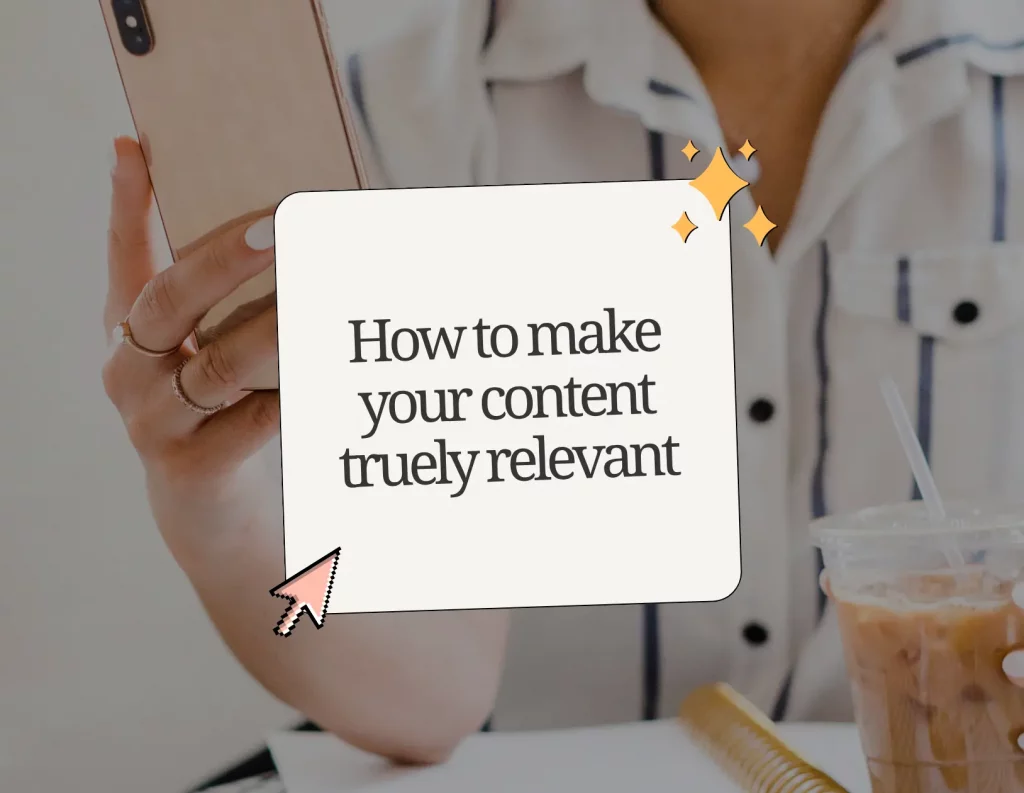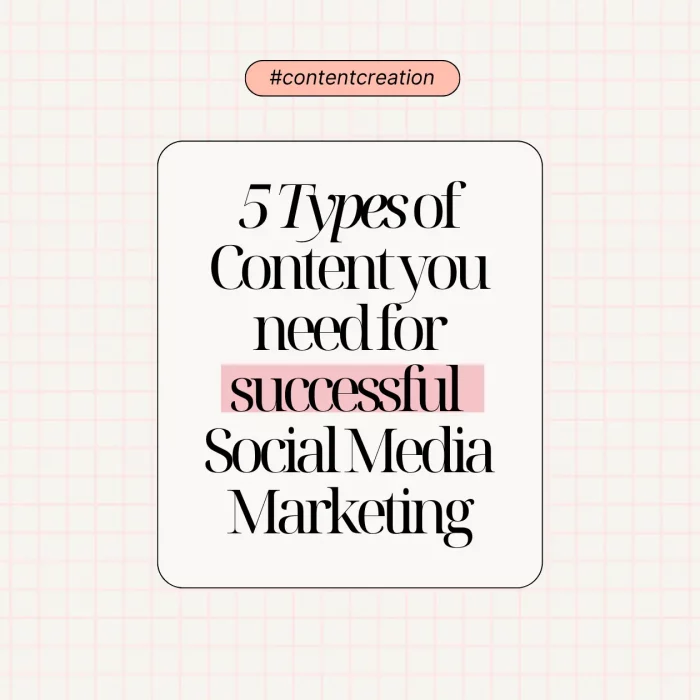
When we talk about good content, many people immediately think of fancy visuals, aesthetic feeds, and perfectly designed pins.
Of course, aesthetics matter — but beauty alone just isn’t enough. Pretty pictures don’t achieve marketing goals. Good content does, because it works.
Good content grabs attention, sparks interest, and ideally triggers a desired action: a click, a signup, a purchase — or simply that great feeling of finally being “understood.”
Content doesn’t just have to look good, it has to work. And content works best when it is relevant to your target audience and delivers real value.
And that’s exactly where many struggle. Often it’s unclear what “relevant” and “value” actually mean in this context — and how to put it into practice for your own content. Keep reading, and you’ll learn exactly that.
Relevant Content: What Does It Really Mean?
A piece of content is relevant when it directly addresses what your audience cares about right now: their needs, questions, problems, or interests.
Relevant content always provides value. Value means: your content genuinely helps your audience. It has a clear benefit — it answers important questions, provides practical tips, inspires, motivates, or makes life easier. And for that, you need more than just “pretty content.”
Only when a piece of content delivers this kind of value will it be noticed, shared, saved, or recommended. And that’s how you build trust and a strong, lasting relationship with your community.
When Is Content Truly Relevant?
Remember: Relevant content = good content. Relevance doesn’t happen by accident or gut feeling. It’s the result of strategy, audience understanding, and empathy. Here are the key criteria that make content relevant:
#1 Relevant content answers questions and solves problems
Your audience has questions or challenges on their mind. If your content directly addresses these and offers concrete solutions, you instantly create value.
#2 Relevant content taps into interests
Entertaining or inspiring content can also be relevant if it covers a topic your audience genuinely cares about. Think: “The bait has to appeal to the fish, not the fisherman.” If you want to create relevant content, you need to know what your audience is interested in — and what information will make them curious about your offer.
#3 Relevant content comes in the right format
Relevance depends not only on what you share but also on how you present it. Whether it’s a video, blog post, infographic, or podcast — the format has to match your audience’s content consumption habits.
#4 Relevant content brings something new
Fresh updates, industry trends, or new insights make your content especially relevant. People want to know what’s new — that creates attention and positions you as an expert. On the flip side, your content loses relevance if you just repeat what everyone else is already saying.
#5 Relevant content helps with decision-making
Good content supports your audience in making better decisions — whether it’s choosing a product, exploring a career path, or trying a new approach in their daily lives. This requires expertise and your audience’s trust.
#6 Relevant content comes at the right time
Timing is key. Content is most effective when it shows up exactly when your audience needs it — for example, seasonal tips, answers to trending topics, or support during a specific buying phase. Even the best content is worthless if it can’t be found or understood. That’s why structure, clarity, and discoverability are crucial — which is where Social SEO comes in.
#7 Relevant content speaks your audience’s language
Whether casual, professional, or highly precise: your tone should match your audience. People who feel understood are more likely to trust you and stick around. Meet them at eye level — and build your content accordingly.
#8 Relevant content is credible and trustworthy
Relevant content is based on your brand, real facts, genuine expertise, and transparency. Misleading or exaggerated content might work in the short term — but long term, it damages your brand.
#9 Relevant content is clear and precise
Your content is especially relevant when your audience can understand it quickly. That means structuring your captions well, building carousels with intent, and sticking to one core message per post. It also means not overwhelming your audience with too much information at once.
Effective Content = Strategy Over Cosmetics
Of course, content can and should look good — aesthetics can amplify attention. But before you start thinking about colors, fonts, and layouts, the most important question is:
Why am I creating this content? For whom? And what should happen afterward?
Only if you can answer these questions will you create content that works long term, not just short term. Because at the end of the day, it’s not about how pretty your content is — it’s about what it makes people feel and do.



